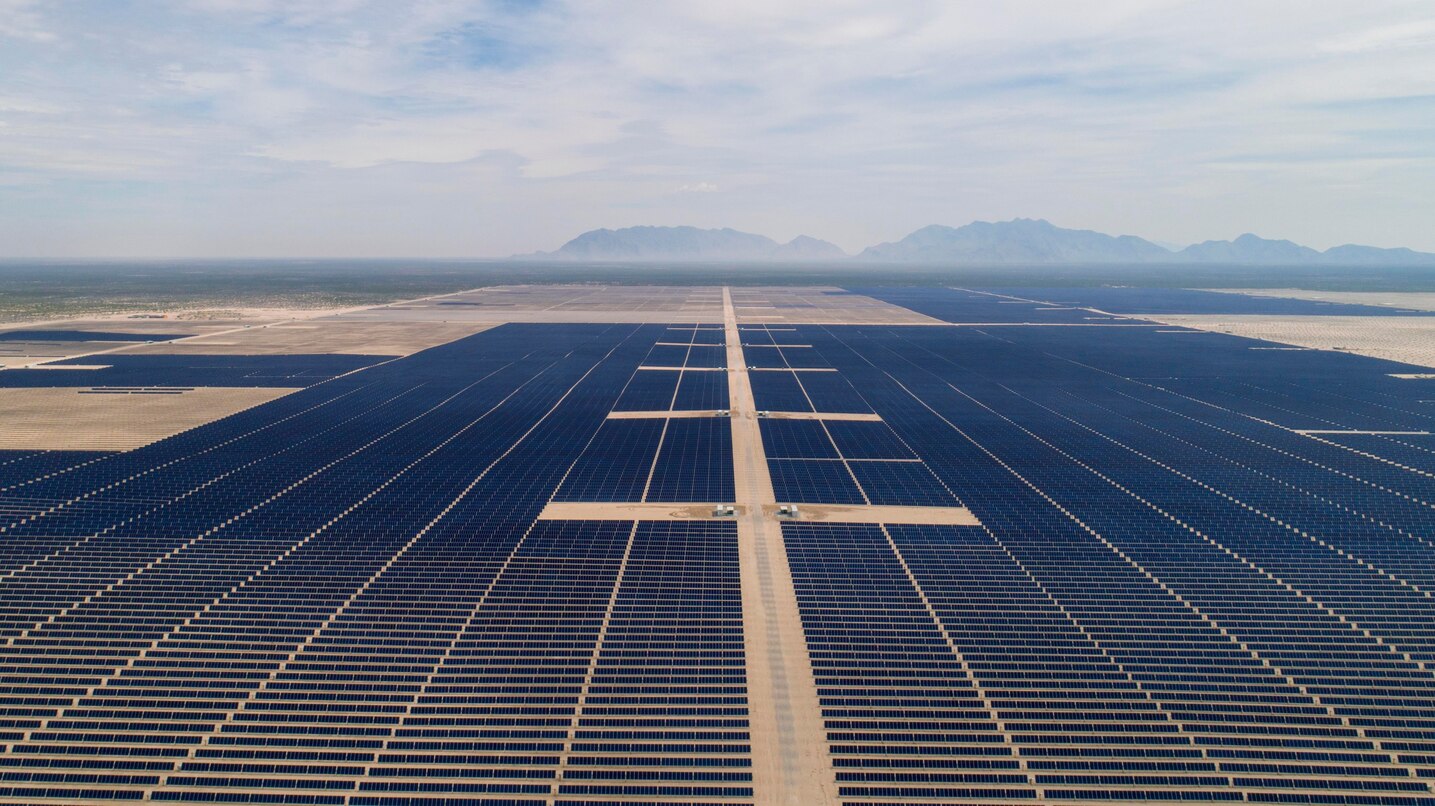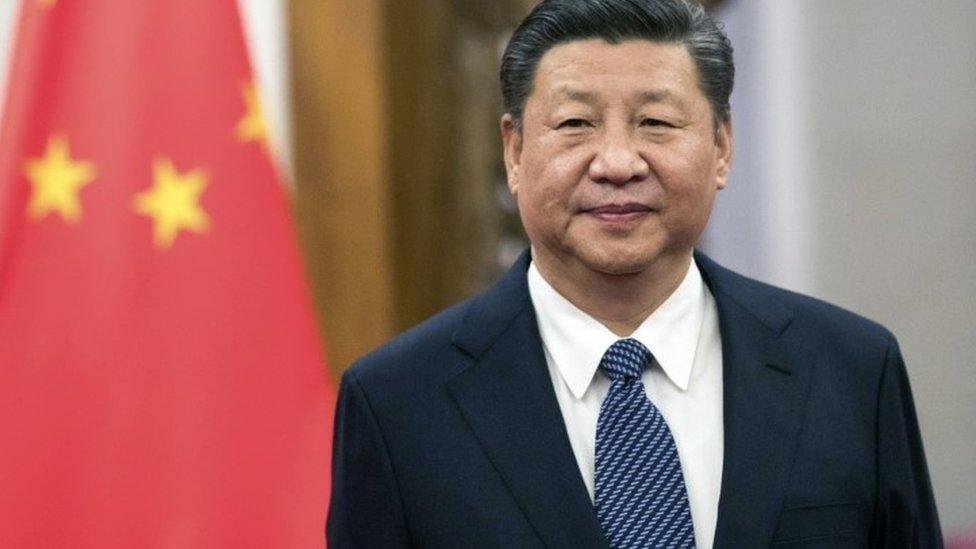- Courses
- GS Full Course 1 Year
- GS Full Course 2 Year
- GS Full Course 3 Year
- GS Full Course Till Selection
- Answer Alpha: Mains 2025 Mentorship
- MEP (Mains Enrichment Programme) Data, Facts
- Essay Target – 150+ Marks
- Online Program
- GS Recorded Course
- Polity
- Geography
- Economy
- Ancient, Medieval and Art & Culture AMAC
- Modern India, Post Independence & World History
- Environment
- Governance
- Science & Technology
- International Relations and Internal Security
- Disaster Management
- Ethics
- NCERT Current Affairs
- Indian Society and Social Issue
- NCERT- Science and Technology
- NCERT - Geography
- NCERT - Ancient History
- NCERT- World History
- NCERT Modern History
- CSAT
- 5 LAYERED ARJUNA Mentorship
- Public Administration Optional
- ABOUT US
- OUR TOPPERS
- TEST SERIES
- FREE STUDY MATERIAL
- VIDEOS
- CONTACT US
PLACES IN NEWS 5th MARCH 2025
PLACES IN NEWS 5th MARCH 2025
05-03-2025

Dehing Patkai National Park
Why in news?
- A rare marbled cat was spotted in Assam's Dehing Patkai National Park, highlighting the region's rich biodiversity and the need for conservation efforts in Northeast India.
About Dehing Patkai National Park:
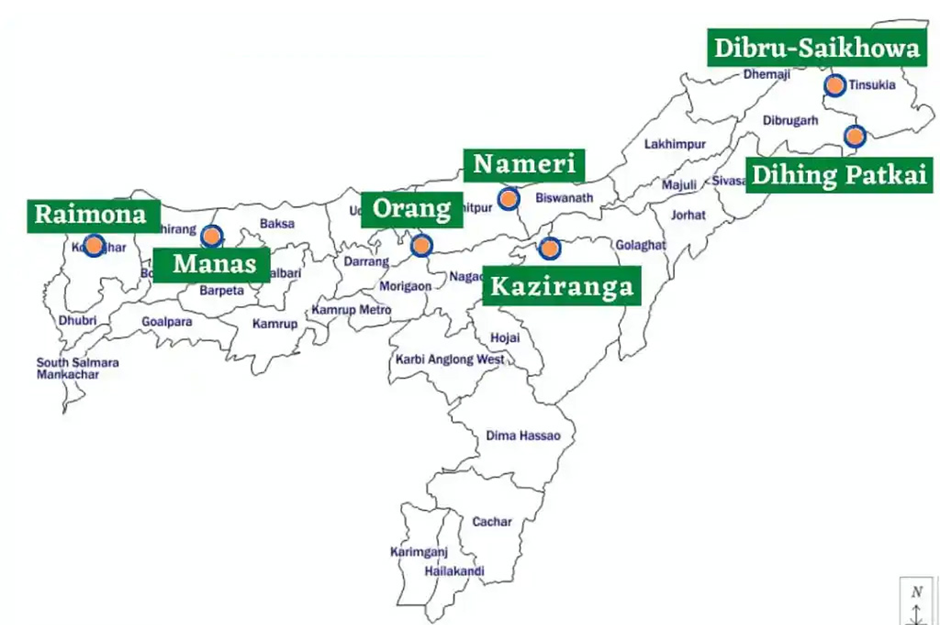
- Location and Geography:
- Dehing Patkai National Park is located in the Dibrugarh and Tinsukia districts of Assam.
- It is part of the Dehing Patkai Landscape, which extends into Arunachal Pradesh.
- The park covers an area of 231.65 km² and is the largest stretch of lowland rainforests in India.
- It was initially declared a wildlife sanctuary in 2004, upgraded to a national park in December 2020, and officially notified in June 2021.
- The park is part of the Dehing Patkai Elephant Reserve, established under Project Elephant, and plays a crucial role in wildlife conservation.
- The region experiences a tropical climate with an annual rainfall exceeding 4,000 mm, supporting dense and diverse vegetation.
- Flora and Fauna:
- The park consists of tropical evergreen forests, with a rich variety of trees, including hollong (Assam’s state tree), nahar, mekai, dhuna, and fig species.
- The dense forest layers support epiphytes, orchids, ferns, wild bananas, and climbers, contributing to a vibrant ecosystem.
- The park is home to over 50 mammal species, including elephants, tigers, leopards, clouded leopards, marbled cats, Himalayan black bears, and Malayan sun bears.
- It hosts primates such as hoolock gibbons, capped langurs, Assamese macaques, and slow lorises.
- The avifauna includes around 293 bird species, including the great hornbill, wreathed hornbill, white-winged wood duck (Assam’s state bird), and several raptors.
- The park also harbours diverse reptiles, amphibians, and over 300 butterfly species, making it an essential biodiversity hotspot.
About Marbled Cat:
- Key Features:
- The marbled cat is a small wild cat with a unique marbled fur pattern of black spots and stripes on a brown or grey coat, providing excellent camouflage in dense forests.
- Males weigh between 4.5 to 9 kg, while females are 2.5 to 5 kg. Known for its agile climbing abilities, it can leap between trees with ease.
- The species is solitary and territorial, using scent marking to establish its domain.
- Distribution:
- Found across South and Southeast Asia, its range includes India, Nepal, Bhutan, Bangladesh, Myanmar, Thailand, and Laos.
- In India, it inhabits the forests of Arunachal Pradesh, Assam, Meghalaya, and Nagaland.
- Conservation Status:
- Listed as ‘Near Threatened’ on the IUCN Red List, the marbled cat faces threats from habitat loss and poaching, necessitating conservation efforts to protect its population.
Nauradehi Wildlife Sanctuary
Why in news?
-
- For the first time in Madhya Pradesh, wolves in Nauradehi Wildlife Sanctuary will be radio-collared to monitor their movements, study behaviour, and enhance conservation efforts for the species in the region.
About Nauradehi Wildlife Sanctuary:
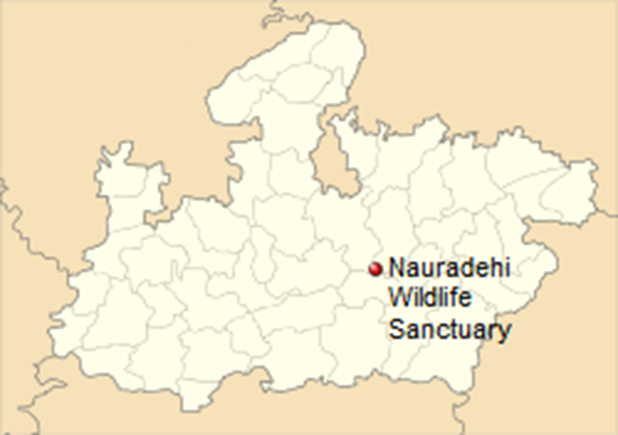
- Location and Geography:
- Nauradehi Wildlife Sanctuary is located in Madhya Pradesh, spanning across the Sagar, Damoh, and Narsinghpur districts.
- Covering an area of 1197 sq. km, it is the largest wildlife sanctuary in Madhya Pradesh.
- The sanctuary is situated on a plateau, forming part of the Upper Vindhyan Range.
- It acts as a wildlife corridor between Panna Tiger Reserve and Satpura Tiger Reserve, while also indirectly linking Bandhavgarh Tiger Reserve via Rani Durgawati Wildlife Sanctuary.
- Classified under the Deccan Peninsula Biogeographic Region, it forms part of the Ganga and Narmada basins.
- The sanctuary is drained by the Ken River and its tributaries, including the Kopra, Bamner, Vyarma, and Bearma Rivers, along with a portion belonging to the Narmada basin.
- Flora and Fauna:
- The vegetation primarily consists of dry mixed-deciduous forests, supporting a rich variety of plant species.
- Flora includes teak, sal, saja, dhawda, tendu, bhirra, and mahua trees.
- Fauna includes nilgai, chinkara, chital, sambar, blackbuck, barking deer, common langur, rhesus macaque, and freshwater turtles.
- It is also home to diverse bird species, including spotted grey creeper, cranes, egrets, and lapwings.
- Notably, the sanctuary supports a significant wolf population, and for the first time, wolves are being radio-collared to enhance conservation and study their movement patterns.
Somnath Temple
Why in news?
-
- The Prime Minister of India has recently visited the Somnath Temple in Gujarat, offering prayers for the health and prosperity of the nation.
- The Prime Minister of India has recently visited the Somnath Temple in Gujarat, offering prayers for the health and prosperity of the nation.
About Somnath Temple:
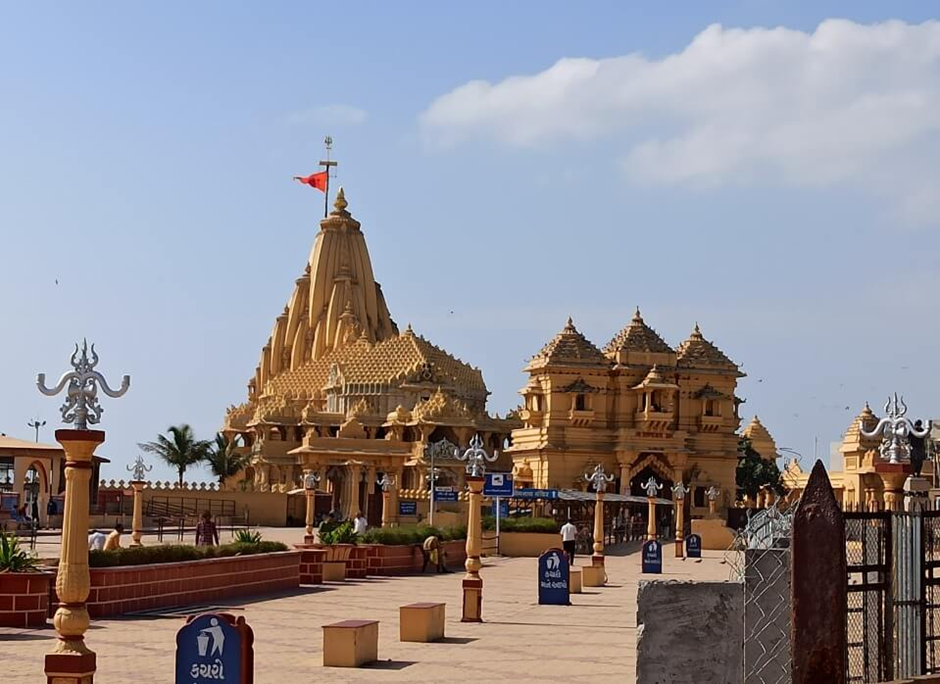
- Location:
- The Somnath Temple, also known as Deo Patan, is a revered Hindu pilgrimage site located in Prabhas Patan, Veraval, in the Saurashtra region of Gujarat, India.
- It stands along the coastline of the Arabian Sea, approximately 400 km southwest of Ahmedabad, and close to the ancient trading port of Veraval.
- Due to its strategic location, the temple was historically a centre for trade and commerce, connecting India, East Africa, and China.
- Cultural and Religious Significance:
- The Somnath Temple holds immense religious significance in Hinduism as the first among the twelve Jyotirlingas of Lord Shiva.
- It is considered a Tirtha Kshetra, a highly sacred Hindu pilgrimage site.
- The temple's name, Somnath, means "Lord of the Moon," as per Hindu mythology, where Soma (the Moon God) is believed to have worshipped Lord Shiva here to regain his lost radiance.
- The temple's sacred association is mentioned in texts such as the Shiva Purana, Skanda Purana, and Jnanasamhita, which emphasise its importance in Hindu pilgrimage traditions.
- Additionally, the Mahabharata and Bhagavata Purana mention Prabhas Patan as a tirtha (pilgrimage site) where Lord Krishna spent his last days before departing from the mortal world.
- The 5th-century poet Kalidasa in his work Raghuvamsa also mentions Somnath as a sacred place.
- Over centuries, the temple has been a focal point of Hindu devotion, embodying spiritual resilience and architectural grandeur.
- Historical Background and Repeated Destruction:
- The exact date of the temple's original construction is uncertain, with estimates ranging between the early centuries of the 1st millennium and the 9th century CE.
- Some historians credit the Chaulukya king Mularaja (r. 997 CE) with constructing or renovating the temple.
- The temple has witnessed repeated cycles of destruction and reconstruction, primarily due to invasions by Muslim rulers.
- The most infamous attack occurred in 1026 CE, when Mahmud of Ghazni, a Turkic ruler, invaded Gujarat, plundered the temple, and looted treasures worth 20 million dinars.
- Islamic historians like Al-Biruni documented this destruction, describing Mahmud's attack as both an act of plunder and religious iconoclasm.
- However, the temple was restored within 12 years and continued to function as an important pilgrimage site.
- Subsequent rulers, including Alauddin Khalji (1299), Zafar Khan (1395), Mahmud Begada (1451), and Aurangzeb (1706), attacked and desecrated the temple multiple times, often converting it into a mosque.
- However, each time, Hindu rulers and devotees rebuilt the temple, symbolising the resilience of faith.
- Modern Reconstruction:
- After India's independence in 1947, the ruined Somnath Temple was reconstructed under the leadership of Sardar Vallabhbhai Patel, the first Deputy Prime Minister of India.
- Despite opposition from certain factions, the temple was rebuilt in the Māru-Gurjara architectural style, and the new temple was inaugurated in May 1951 by the first President of India, Dr. Rajendra Prasad.
Vantara
Why in news?
- Prime Minister Narendra Modi inaugurated Vantara, a state-of-the-art animal rescue and conservation centre in Gujarat, aimed at rehabilitating and protecting wildlife while promoting biodiversity and environmental conservation efforts.
About Vantara:
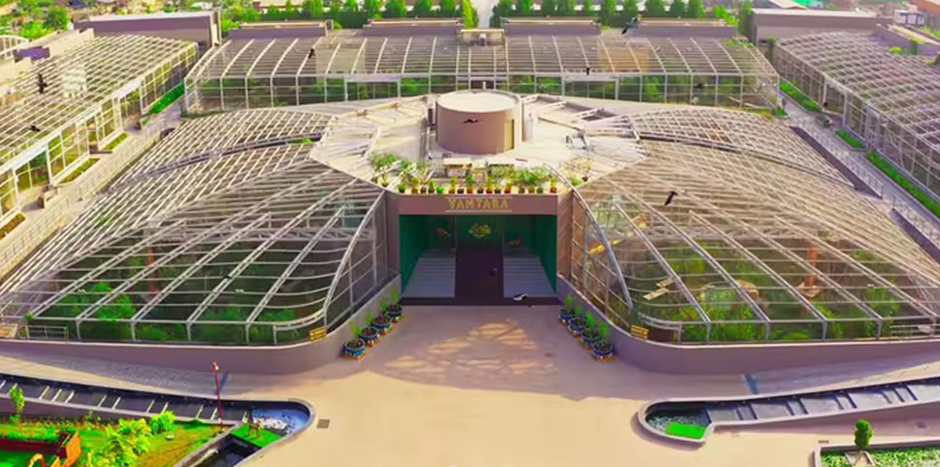
- Vantara is a large-scale wildlife rescue, conservation, and rehabilitation centre established by Reliance Industries and Reliance Foundation.
- It is situated within the Reliance Jamnagar Refinery Complex in Jamnagar, Gujarat.
- Area: Spanning 3,000 acres, it focuses on animal welfare and biodiversity conservation.
- The centre has rescued over 200 elephants and thousands of other animals, including rhinos, leopards, and crocodiles.
- The centre is equipped with modern veterinary technology like ICU, MRI, CT scan, X-ray, ultrasound, and endoscopy.
- Management: Led by Anant Ambani, with a workforce of 2,100 employees, including 80 full-time veterinarians.
- International Collaboration: Partners with organisations like IUCN and WWF for conservation efforts.
- Concerns: Some animal rights groups have raised concerns over privatisation, environmental suitability, and the proximity to the Jamnagar Refinery.
Panama Canal
Why in news?
- A U.S. firm has agreed to purchase Panama Canal ports previously controlled by a Chinese company, amid concerns raised by former President Donald Trump over China's influence on strategic global trade routes.
About Panama Canal:
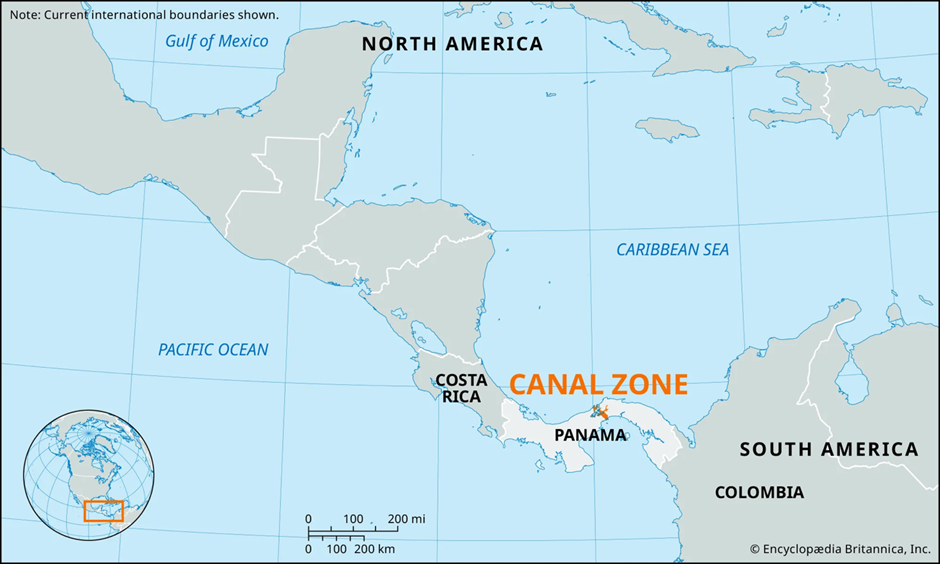
- Location and Establishment
- The Panama Canal is an artificial waterway connecting the Atlantic Ocean (via the Caribbean Sea) to the Pacific Ocean.
- It is located in Central America, cutting across the Isthmus of Panama.
- The canal, which is approximately 82 km (51 miles) long, significantly reduces maritime travel time by avoiding the long and perilous route around the southern tip of South America (Cape Horn).
- The construction of the canal began under French leadership in 1881 but was abandoned due to engineering difficulties and high mortality rates among workers.
- The United States took over the project in 1904, successfully completing it in 1914.
- The U.S. controlled the canal until December 31, 1999, when its administration was transferred to Panama under the Torrijos-Carter Treaties.
- The Panama Canal Authority (ACP) now manages and operates the canal.
- Importance in Global Trade
- Time and Cost Efficiency: It reduces travel time for ships by approximately two weeks compared to the route around South America.
- Global Trade Volume: Nearly 5% of world trade passes through the canal. It is especially crucial for trade between Asia, the Americas, and Europe.
- Strategic Importance: The canal serves as a critical passage for energy shipments, including liquefied natural gas (LNG), oil, and bulk commodities.
- Panama’s Economy: The canal is a major revenue source for Panama, contributing significantly to its GDP through toll fees.
- In 2016, the Panama Canal Expansion (Third Set of Locks Project) was completed, allowing larger Neo-Panamax ships to transit, further increasing its trade capacity.
- Current Challenges Faced by the Panama Canal
- Drought and Climate Change: The canal relies on freshwater from Gatun Lake for its locks. Severe droughts, exacerbated by climate change and El Niño, have led to reduced water levels, restricting the number of ships passing daily. In 2023, authorities had to limit transits and impose weight restrictions, increasing shipping costs.
- Geopolitical and Security Concerns: Growing tensions between the U.S. and China over strategic infrastructure projects, including ports near the canal, raise security concerns. Cybersecurity threats and potential sabotage remain risks.
- Competition from Alternative Trade Routes: The expansion of the Suez Canal and the potential for an Arctic shipping route due to melting ice pose long-term competition.
- Maintenance and Ageing Infrastructure: Despite modernisation efforts, maintaining and upgrading the canal is costly and necessary to meet increasing trade demands.
UPSC CSE PYQs
Q1. The Prime Minister recently inaugurated the new Circuit House near Somnath Temple at Veraval. Which of the following statements are correct regarding Somnath Temple?
Select the correct answer using the code given below: (2022)
Answer: Option A
|

